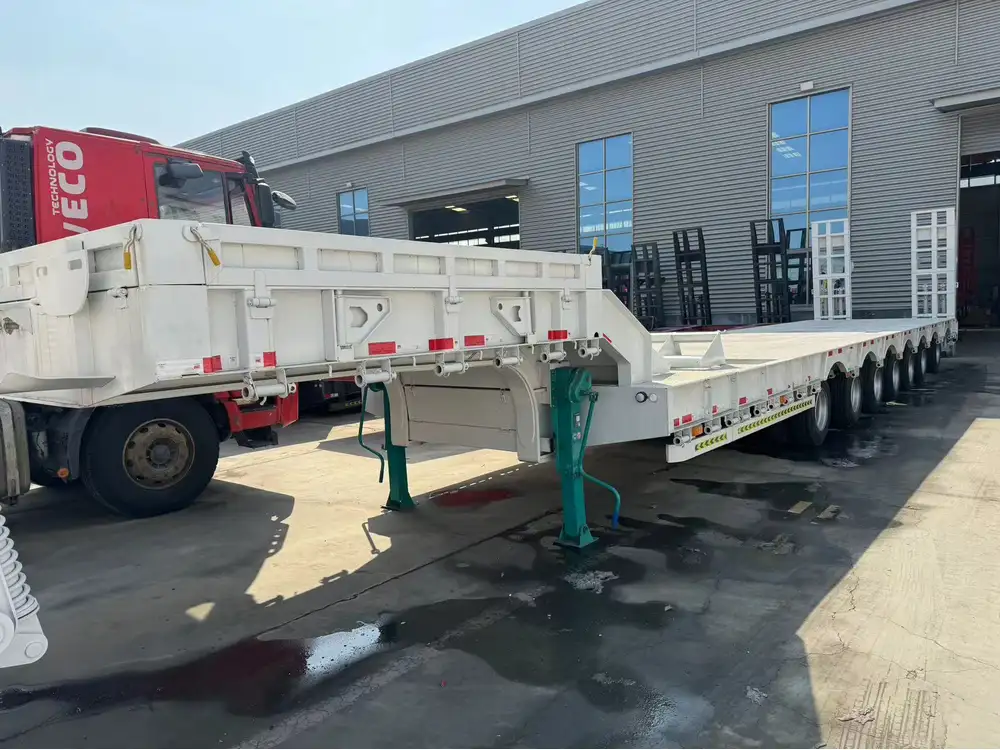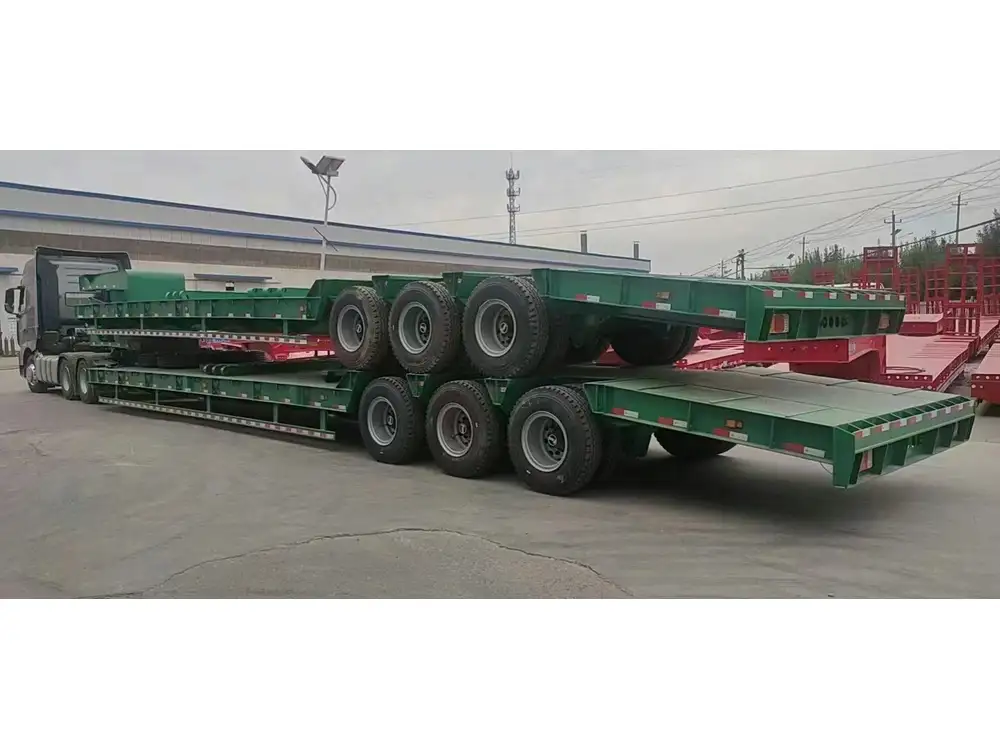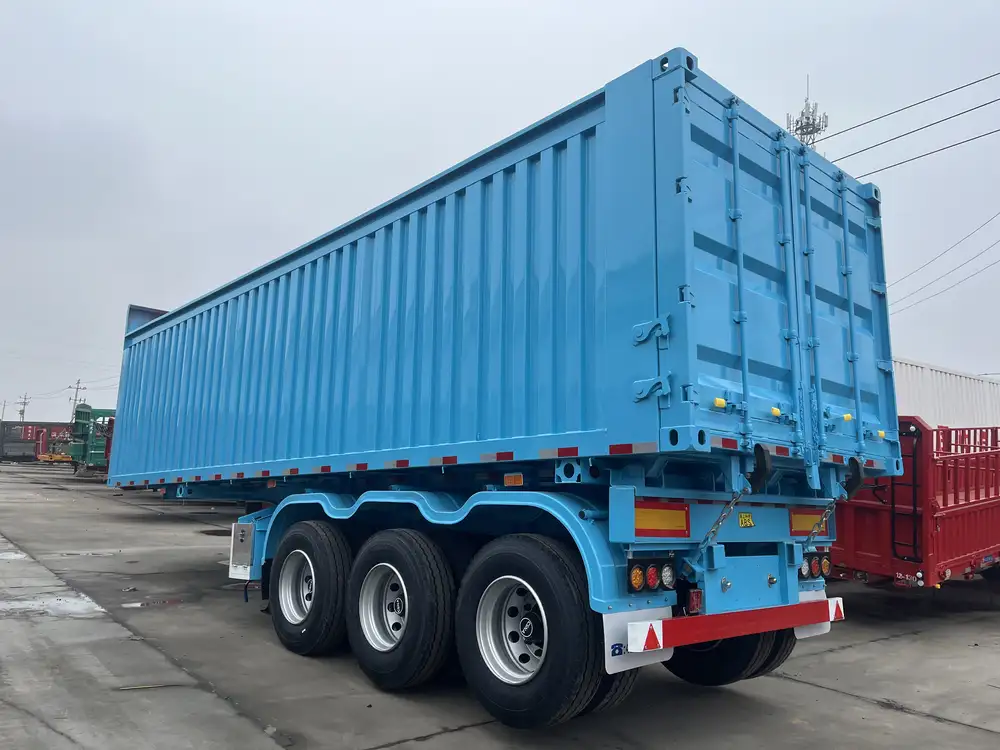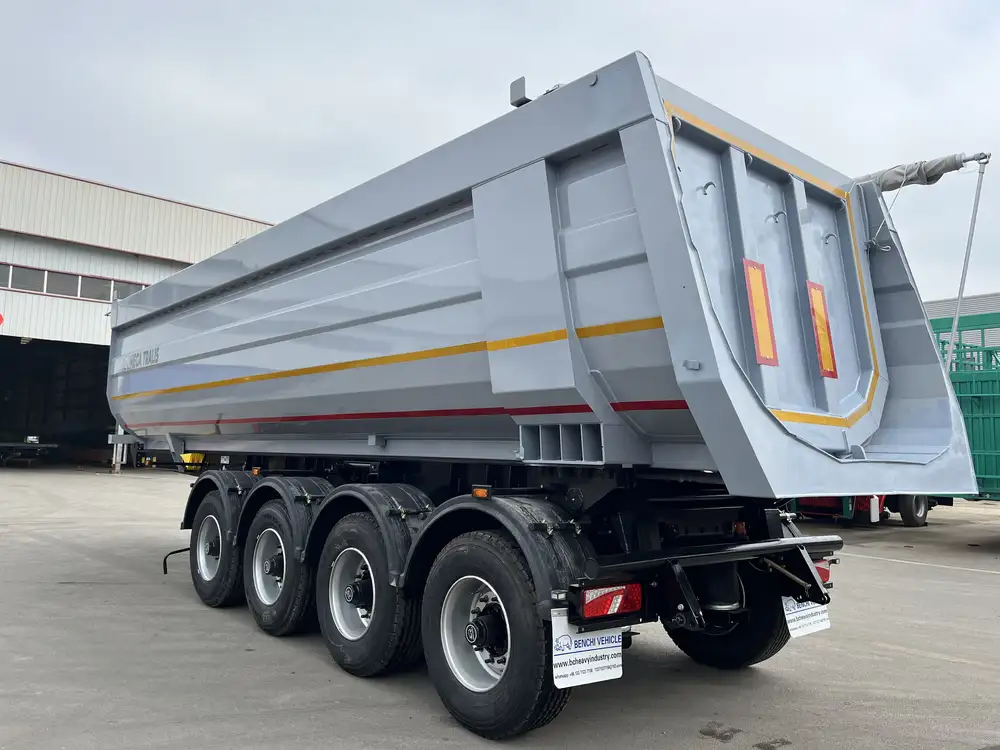In the world of semi-trailers, particularly for dump trailers, understanding the necessary components of a wet kit is essential for optimal performance and efficiency. A wet kit system functions as the hydraulic heart of a dump trailer, enabling the smooth lifting and lowering of the trailer’s bed to facilitate loading and unloading materials. Below, we will explore the essential elements that comprise a wet kit, answer common queries, and provide insights into choosing the right components tailored to your operational needs.
Understanding Wet Kits
What Is a Wet Kit?
A wet kit consists of hydraulic components designed to power the hydraulic system of the dump trailer. Typically, it includes:
- Hydraulic Pump: Converts mechanical energy into hydraulic energy, pressurizing fluid to operate the system.
- Hydraulic Reservoir: Stores hydraulic fluid used in the system, ensuring a consistent supply for enhanced efficiency.
- Hydraulic Hoses: Transfer the fluid from the pump to the cylinders and back, creating a closed-loop system.
- Control Valve: Regulates fluid flow to various components, allowing for movement and positioning control.
- Hydraulic Cylinders: Responsible for the actual lifting motion of the trailer bed.

Key Benefits of Wet Kits
Investing in a proper wet kit for your dump trailer offers numerous benefits, including:
- Improved Efficiency: Adequate hydraulic pressure allows for faster lift cycles, increasing overall productivity.
- Reliability: Quality components lead to fewer breakdowns and extended lifespan of both the trailer and the hydraulic system.
- Versatility: A well-functioning wet kit can power various attachments, enhancing the dump trailer’s utility.
Selecting the Right Wet Kit Components
When considering what wet kit you need for your dump trailer, several factors must be evaluated:
1. Type of Material Transported
The kind of materials you intend to haul significantly impacts the selection of components. For instance:
| Material Type | Recommended Cylinder Size | Suggested Pump Capacity |
|---|---|---|
| Gravel and Sand | 3” – 4” | 10 GPM |
| Construction Debris | 4” – 5” | 15 GPM |
| Heavy Machinery | 5” – 6” | 20 GPM |

2. Trailer Size and Weight Capacity
The size and capacity of your dump trailer dictate the specifications of your wet kit. Ensure that the hydraulic cylinders chosen are rated for the dump trailer’s total weight and load.
3. Hydraulic Pump Type
There are different types of hydraulic pumps available, and choosing the right one is crucial. The key types include:
- Gear Pumps: Known for their robustness, gear pumps are suitable for applications requiring consistent flow.
- Piston Pumps: More efficient for high-pressure applications; optimal for larger cylinders.
- Vane Pumps: Best for medium-pressure systems; provide variable flow rates.
4. Hydraulic Fluid Specifications
Not all hydraulic fluids are created equal. Consider the following factors when selecting hydraulic fluid:
- Viscosity: Ensure the fluid is suitable for the operating temperature range.
- Additives: Look for rust and oxidation inhibitors, as they extend the life of hydraulic components.
- Environment: In cold areas, consider anti-wear fluids that function well under lower temperatures.

5. Control System Type
You must decide between a manual or electrical control system. While manual systems are less expensive and easier to maintain, electrical control systems offer precision and remote operation capabilities.
Essential Components of a Wet Kit
Now let’s delve deeper into the critical components that make up an effective wet kit for dump trailers.
Hydraulic Pump
The hydraulic pump’s capacity is paramount. A higher GPM (gallons per minute) rating results in faster lift times; however, it can also drain the reservoir more quickly. Choosing the optimal size requires balancing speed with the tank’s fluid capacity.

Reservoir
A well-designed reservoir is not just a tank; it must effectively dissipate heat, incorporate a filter to prevent contaminants, and be large enough to hold the required amount of hydraulic fluid without risking overheating.
Cylinders
Cylinders convert hydraulic pressure into linear motion. Factors such as diameter and stroke length are vital to consider:
- Diameter: A larger diameter allows for more force but requires more hydraulic fluid.
- Stroke Length: The stroke should match the trailer’s maximum lifting height, ensuring efficient unloading.
Hoses and Fittings
Selecting quality hydraulic hoses and fittings is critical. The hoses should withstand the system’s maximum pressure and be resistant to wear and environmental factors. Always consider:
- Hose Lengths: Ensure that lengths are calculated to prevent straining on the fittings and allowing for flexible movement.
- Fitting Type: Use compatible connectors to avoid leaks. Common types include JIC, NPT, and ORFS.

Control Valve
The control valve allows the operator to direct hydraulic fluid flow. Various configurations are available, such as:
- Single-acting Valves: Engages lift and gravity drop; often used in lightweight applications.
- Double-acting Valves: Controls both lifting and lowering, ideal for heavier trailers.
Safety Features
Incorporating safety features is non-negotiable. Consider the following:
- Pressure Relief Valves: Prevent over-pressurization which can lead to component failure.
- Emergency Stop Mechanisms: Vital for immediate shutdown of operations in case of malfunction.
Troubleshooting Common Wet Kit Issues
Every system encounters challenges from time to time. Here are common problems associated with wet kits and tips for handling them:

1. Hydraulic Leaks
Hydraulic leaks can occur due to worn hoses or fittings. Regular inspections and replacing worn components can prevent costly downtime.
2. Slow Operation
If your dump trailer operates slowly, check for:
- Low Hydraulic Fluid Levels: Always maintain appropriate levels.
- Clogged Filters: Ensure filters are clean to allow smooth fluid flow.
- Pump Issues: Inspect the pump for wear – a malfunctioning pump can significantly affect performance.
3. Uncontrolled Movement
Uncontrollable movements can arise from faulty valves or low fluid levels. A quick inspection of the control valve and assurance of adequate hydraulic fluid will mitigate these issues.

FAQs About Wet Kits for Dump Trailers
How Do I Know if My Wet Kit Needs Maintenance?
Regular system checks are vital. Look for leaks, unusual sounds, or sluggish performance. Preventative maintenance ensures longevity and efficiency.
Can I Install a Wet Kit Myself?
Installation can be complex due to hydraulic connections and must be performed with precision. If unsure, we recommend hiring a professional to ensure the proper setup.

What Is the Average Lifespan of a Wet Kit?
Quality components can provide many years of service, typically ranging from 5 to 15 years, contingent upon maintenance practices and usage conditions.
Are There Alternatives to Wet Kits?
While wet kits are the most common, some operators explore electric systems for lighter applications. However, wet kits remain unmatched in heavy-duty performance.
Final Thoughts
Choosing the right wet kit for a dump trailer is a critical decision that impacts overall efficiency and productivity. By thoroughly understanding the components, considering the materials transported, and evaluating operational requirements, one can select the optimal system tailored for individual needs. Regular maintenance and proper usage ensure longevity, reliability, and enhanced operational success. As you navigate the world of dump trailers, keep these considerations in mind, and ensure you maximize the effectiveness of your wet kit system.



